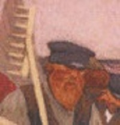This is for RTS players, as I want to ask you about game mechanics ?️
I'm especially curious about those mechanics that you have found in only one or really a few of games, that you want to share. They can be good or bad ones, but must be rare ?️
I'll start with my list ?️:
Original War
The name of the game may be confounding as it doesn't means what most of the people think it means ?️. But title aside, the story of the game goes like that (shortly): in the Russia someone discovers a new mineral that makes producing high amount of energy very cheap. On the other side of the pond, USA founds an alien artifact that makes time travel possible. They make a cunning plan to steal the mineral from Russians during the latest Ice Age when transporting it from Siberia to Alaska is possible. So they send their troops using the alien artifact. Of course, Russians (in the alternate timeline) don't take that lightly and send their troops too...
The mechanics I want to describe here is based of an idea of scarcity: the troops depend on resources send from the future, because they can't make them on their own in 2,000,000 BC.
First such a resource are Crates: you need them to build anything. During game-play they appear on a map. There is one 'but" thou: the time machine used by both sides is imperfect and sends things to a random point in time and space. This means these crates appear in random places at irregular time moments. This forces players to leave their bases and "hunt" for crates. And the amount of these is also not big: one pack contains no more than 5 of them. And to make things harder at the beginning you can move only one crate at a time. This means you have to count every crate you spend and if you want more, you have to be more smart than your opponent and "sweep" away crates before he does.
The second resource are People: to put it simply, there is no building in OW that "produces" people. You are given a limited amount of humans at the beginning of each mission (usually 4-6 of them) with no way to replenish them (except a scripted event). And of course people are needed everywhere too: buildings doesn't work without them. So are tanks. This makes you do extra care for any of person you have and every death is a big thing here.
Both of these restrictions I've described above means there are no big bases and armies of thousands tanks in OW.
Earth 2150
The story of the game is: the orbit of the Earth has been destabilized and in a few months the planet will be destroyed. It forces three countries to build an escape fleet, but the last remaining resources on Earth are enough only for one side...
The mechanic in this game I want to show is: you play the game on more than one map at a time. In the vanilla game there are two of them, but the next add-on The Moon Projects adds another ones. One of these maps changes from mission to mission (and thus is called, no surprise here, "the mission map"). On the other side the rest of the maps contains your main base and these doesn't change. And there is a special unit, a transporter, that is used to move your units between maps. All it needs is a landing pad placed on a map.
This allows players to use an interesting tactics: all of walkthroughs made by players for other players advice them not to build anything on the mission map, except the mentioned landing pad. Every unit a player needs should be made in the main base and transported to a mission via the transporter.
This also means you can transport your units back from a mission and use them in the next missions. The same stands for technologies. So, this game avoids reinventing the wheel by players, because they don't have to make their armies from scratch every mission. It also creates another "problem": at some point you will have to decide if you send an old, but experienced unit with old weapon type, or a fresh new with the newest weapon, but being a greenhorn to a battle.
Earth 2160
A continuation of the above game. It doesn't contain the mechanics of the predecessor, but adds another one for one extra side: Aliens.
The aliens to the opposite to the human sides uses the base-less idea of playing: you don't build anything with aliens. Instead, every unit in this side is a resource gathering unit (besides the main propose of the unit). If one stands next to a resource point it "eats" it. When it collects enough of it, you can order it to clone or evolve. Cloning means you will get one more unit, while evolving...well, think here about Pokémons ?️. This means that even one unit, if it survives a battle, can re-make an army. And this makes that one side hard to defeat.
Homeworld
You can probably guess what mechanics I'm about to tell but I'll try anyway ?️.
It is the full 3D environment and also the feature-less scenery of the outer space. The first means you can attack your opponent from any side, and the second, you can't hide behind a bush for an extra defense.
But there is also yet another mechanics, similar to the one I described in "Earth 2150": your Mothership can move all your resources (which I mean both raw materials and your units) from mission to mission. This was used in the design of some of missions where you had to rely on what you were able to make/gather in the previous missions. If you didn't do well one mission, it meant your next mission will be harder if out impossible to finish.
Achron
3 words: REAL Time Travel.
Probably this is the only game not only among RTS games but games at all with such mechanics.









